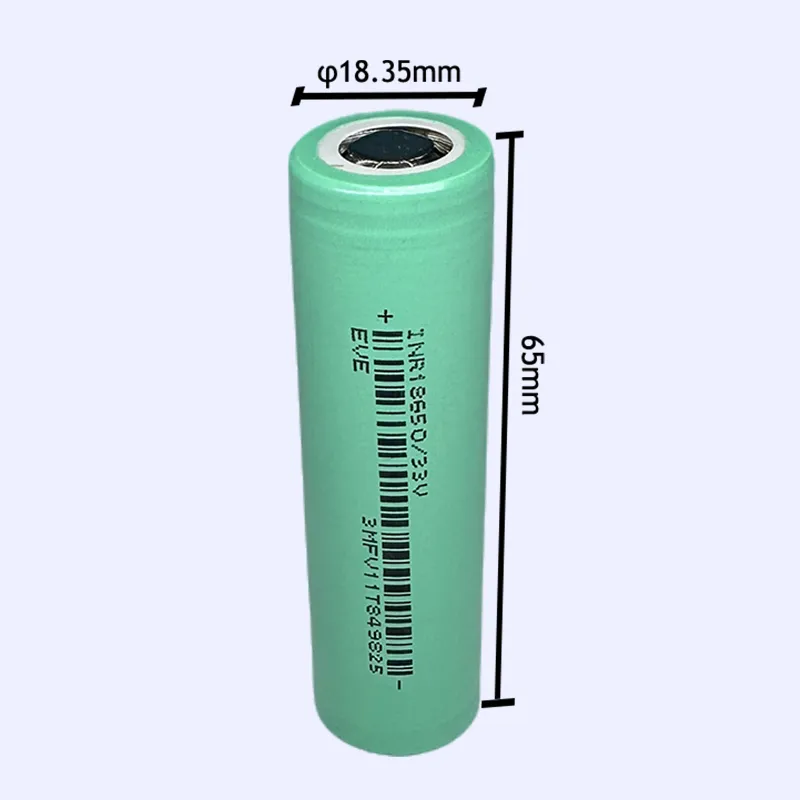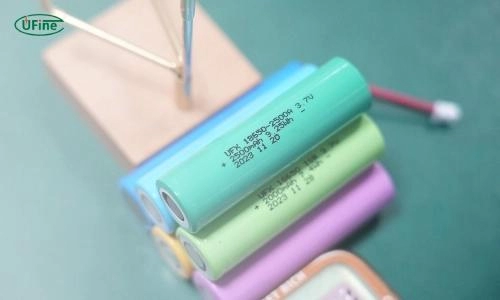Batteries are an essential power source for many everyday devices, ranging from flashlights to cameras. Understanding the key differences between battery types is crucial, especially when selecting the right one for specific needs. Among commonly used battery types, 18650, CR123, and CR123A batteries are particularly prominent. This guide will explore each battery type, highlighting their unique features, uses, and advantages.
Part 1: Understanding the 18650 Battery
The 18650 is a rechargeable lithium-ion battery known for its high energy density, long cycle life, and ability to deliver a high current. The “18650” designation refers to its dimensions: 18mm in diameter and 65mm in length. These batteries are widely used in devices such as laptops, power tools, electric vehicles, and more.
Key Features of 18650 Batteries:
- Rechargeable: Multiple recharges possible.
- High Energy Density: Stores a significant amount of energy for extended run times.
- Long Cycle Life: Designed for numerous charge and discharge cycles.
- High Current Output: Well-suited for high-power devices.
Part 2: Understanding the CR123 Battery
The CR123 is a non-rechargeable lithium battery commonly used in high-drain devices due to its ability to provide a stable 3V output. Measuring 17mm in diameter and 34.5mm in length, it is compact, lightweight, and used in a variety of applications.
Key Features of CR123 Batteries:
- Non-Rechargeable: Intended for single use only.
- High Voltage: Provides a stable 3V output.
- Compact Size: Fits easily into smaller devices.
- High Energy Density: Delivers long-lasting power for high-intensity applications.
Part 3: Understanding the CR123A Battery
The CR123A is essentially the same as the CR123 battery, sharing the same dimensions and specifications. The only difference is the “A” designation, which some manufacturers use to distinguish between lithium primary (non-rechargeable) batteries and rechargeable versions. Both CR123 and CR123A batteries are typically non-rechargeable, providing a stable 3V output.
However, rechargeable versions of the CR123A, known as RCR123A or 16340, are available. These rechargeable lithium-ion batteries often operate at a slightly higher voltage, typically 3.6V or 3.7V, making them suitable for devices designed to support rechargeable power sources.
Key Features of CR123A Batteries:
- Non-Rechargeable: Single-use battery.
- High Voltage: Provides a stable 3V output.
- Compact and Lightweight: Well-suited for small, portable devices.
- Long Shelf Life: Can hold their charge for extended periods, making them great for backup purposes.
Key Features of Rechargeable CR123A (RCR123A) Batteries:
- Rechargeable: Can be reused multiple times, reducing waste.
- Higher Voltage: Typically offers 3.6V or 3.7V.
- Eco-Friendly: A more sustainable option compared to disposable batteries.
Part 4: 18650 vs. CR123 Battery Comparison
When comparing 18650 and CR123 batteries, several factors come into play, such as capacity, rechargeability, cost-effectiveness, and application suitability.
Capacity and Performance
- 18650 Batteries: Offer a capacity range from 1800mAh to 3500mAh, providing longer run times before requiring a recharge.
- CR123 Batteries: Typically have a capacity of 1400mAh to 1500mAh, which is sufficient for short-term use but not as long-lasting as the 18650.
Rechargeability and Cost
- 18650 Batteries: These are rechargeable, offering significant long-term savings despite a higher initial cost.
- CR123 Batteries: Being non-rechargeable, they require replacement after each use, leading to higher long-term costs.
Applications
- 18650 Batteries: Best suited for high-drain devices like laptops, power tools, and electric vehicles, where higher capacity and rechargeability are crucial.
- CR123 Batteries: Ideal for compact, high-drain devices where size and weight are paramount.
Conclusion: 18650 vs. CR123
While 18650 batteries stand out for their higher capacity and cost-effectiveness through rechargeability, CR123 batteries are often better suited for smaller, high-drain devices where size and weight are critical factors. Each battery type has its unique advantages, so the best choice depends on your specific needs and device requirements. Whether you’re looking for the long-term value of a rechargeable 18650 battery or the convenience of a single-use CR123, both options offer value in the right context. For further insights on battery applications and performance, refer to our guide on safely charging lithium batteries with standard chargers.
Part 5. CR123 vs. CR123A Battery Comparison
Comparing CR123 and CR123A batteries is straightforward, as they share the same specifications and performance. However, users should note that rechargeable versions of the CR123A battery also exist.
Parameters
- CR123 and CR123A: Both offer a voltage of 3V and have similar capacities, typically ranging from 1400mAh to 1500mAh.
- Rechargeable CR123A (RCR123A): These generally offer a voltage of 3.6V or 3.7V and can be recharged multiple times.
Applications
- CR123 and CR123A: These batteries are commonly used interchangeably in various devices, including cameras, security systems, and flashlights.
- Rechargeable CR123A (RCR123A): Ideal for devices that support rechargeable batteries, providing an environmentally friendly alternative.
Market Availability
- CR123 and CR123A: These batteries are widely available and frequently used in professional fields that require a reliable power source in a compact form.
- Rechargeable CR123A (RCR123A): Gaining popularity due to their reusability and environmental friendliness.
CR123 vs. CR123A Battery Comparison Summary
As CR123 and CR123A batteries are nearly identical, they can be used interchangeably without any noticeable differences in performance. However, the rechargeable CR123A (RCR123A) offers a more sustainable option for users looking to reduce waste and save on long-term costs. Ultimately, the choice between these batteries depends on brand, availability, and whether you prefer a rechargeable option.
Part 6. Frequently Asked Questions
Can I replace a CR123 with an 18650?
No, you cannot directly replace a CR123 battery with an 18650 battery. The two batteries have different sizes and voltage ratings. CR123 batteries are smaller and typically offer 3V, while 18650 batteries are larger and provide around 3.7V. Using the wrong battery can damage your device or cause it to malfunction. Always check your device’s specifications for compatibility.
What battery can I use instead of 18650?
If you are looking for an alternative to the 18650 battery, consider alternatives like the 21700 or 20700 batteries. These batteries have similar voltage and capacity but may have slightly different dimensions. Ensure that the alternative fits properly in your device and meets the required voltage and current requirements.
What battery can I use instead of CR123A?
Suitable alternatives for CR123A batteries are rechargeable RCR123A or 16340 batteries. These batteries have similar dimensions and voltage ratings, making them suitable replacements. However, ensure that your device is compatible with rechargeable batteries before using them. Many devices use non-rechargeable CR123A batteries, so always check the device manual for recommended battery types.
Is CR17335 the same as CR123A?
Yes, CR17335 is essentially the same as CR123A. They have the same dimensions and voltage ratings. The name difference often stems from different manufacturers or standards, but in most devices, these batteries can be used interchangeably. Always verify your device’s specifications to ensure compatibility before replacing batteries.
How long does a CR123A battery last?
The lifespan of a CR123A battery depends on the device it is powering and how frequently it is used. CR123A batteries can last anywhere from a few months to several years. For example, in low-power devices like smoke detectors, they can last up to three years. However, in high-drain devices like digital cameras, the battery may only last for a few hours of continuous use. Always consider your device’s power requirements and usage habits.
Related Tags:
- KHZH
- Battery Industry Content Writer
More Articles
Understanding Lithium Polymer Battery Storage Voltage
Understanding the ideal storage voltage for lithium polymer batteries is crucial for extending their lifespan. Storing them at 3.7V–3.85V per cell helps maintain battery activity, minimize wear, and prolong lifespan. Learn more now!
Lithium Battery Pricing Factors Analyzed
The cost of lithium batteries plays a significant role across various industries. This detailed analysis delves into the primary factors driving pricing, market trends, and the future outlook for battery costs.
Liquid Metal vs. Lithium Batteries: A Comprehensive Comparison
This comparison looks at the characteristics of liquid metal batteries and lithium batteries, including applications, advantages, disadvantages, costs, and future prospects, aiming to help you make informed choices.
Lithium Polymer Battery: Capacity, Lifespan, and More – A Complete Guide
Delve into lithium polymer batteries, including their capacity, energy density, cycle life, and more. By understanding these aspects, you can optimize battery performance and avoid common mistakes.
U1 Battery Explained
Learn everything you need to know about U1 batteries, including their dimensions, types, differences, and maintenance tips. Find out whether AGM or lithium U1 models are better for you and learn how to choose correctly.









